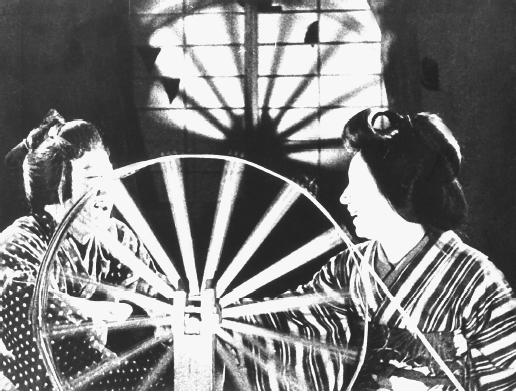The first five minutes of "WALL•E," place so much visual wonderment on the movie screen that my eyes almost danced out of my skull trying to take in all the details. And it never stops dazzling. Pixar Animation Studios' latest effort presents one among hundreds of cinematic visions of a post-apocalyptic future, but in this one there are no down-and-out humans living in cyberslums or sinister corporate goons who lord over them. With the exception of a cockroach, there's no life at all besides a run-down robot that may be humanity's last hope.
In an uninhabited city whose towering skyscrapers are actually giant stacks of compressed trash cubes, the plucky little robot zips from place to place, scavenging alone on the dusty brown landscape. The scenes of him rolling through the desolate nothingness recall the opening shots of last year's "I Am Legend" (a similarity that's surely unintentional, given the extensive pre-production required of Pixar's computer animation). But there are two key differences between the films. The hero of "WALL•E" is never as dour as Will Smith in "I Am Legend," and there are no vampiric monsters with whom the little fellow has to contend. Also, Smith wasn't cranking the "Hello Dolly" soundtrack while he worked. This is a film about connection, not fear.
It's 800 years in the future, and Earth has become a land of garbage. The humans abandoned it 700 years ago, with plans to return in a few years, when trash-gathering WALL•E robots were supposed to have disposed of it. But the humans never came back, and the sole functioning robot goes about business in his own idiosyncratic manner.
Fred Willard—who is so consistently good that his presence alone earns a smile, plays the film's only live-action part, in old footage of the president of the company that pledged to clean up earth's mess. His is the only voice that says more than a word during the first act of the film.
The trash-filled wasteland is a commentary on a wasteful society, and Willard's promises are ones that appeal to mankind's laziness. Don't stay behind to fix the problem, he says, take a pleasure cruise through space and everything will be fixed when you return. Now, the ignore-the-problems attitude has been passed on for several generations, resulting in an obese human who only knows how to pass the time by looking at computer screens while traveling on hovering chairs.
Director Andrew Stanton, who previously made "A Bugs Life" and "Monsters, Inc.," reaches the highest level of visual storytelling. The personalities of the film's many different robots come through in their movement and sounds—dialogue isn't necessary. WALL•E's mannerisms makes for great comedy and great action. One scene, in which he aggravates a cleaning robot by trying to deduce his motivations, comes right out of Buster Keaton's handbook. The supporting human characters who speak almost feel trite by comparison.
Stanton and his collaborators brilliantly designed their characters and environments, both on the depleted earth and on WALL•E's ensuing journey to outer-space. The designs are both original and full of references, including the most iconic robot-computer of all time, the HAL 9000 from "2001: A Space Odyssey."
WALL•E's solitude must have given his processors lots of time to consider the greater purposes of existence. And so he became a deeply sentimental robot, hungry for interaction and extremely attached to the trinkets that Earth's former inhabitants left behind. He doesn't plow the trash and compact it without thought, as his programmers intended. He sorts through it, looking for special trinkets that interest him—a hand-powered food mixer, a jewelry case (the ring inside, not so much) and, most of all, a VHS player and an old cassette of "Hello Dolly," which shows him the magic of singing, dancing and holding hands.
He brings this hunger for interaction to a human race that has started to forget it. Whether you're a baby or a senior citizen, you can't help but notice the robot's steadfast commitment to friendliness, and the difference it makes. "WALL•E" reminds us of the joys to be had in life's simple gestures, like a wave, a handshake or the beautiful act of holding hands.
bxAv110
bxAv110
bxAv110


